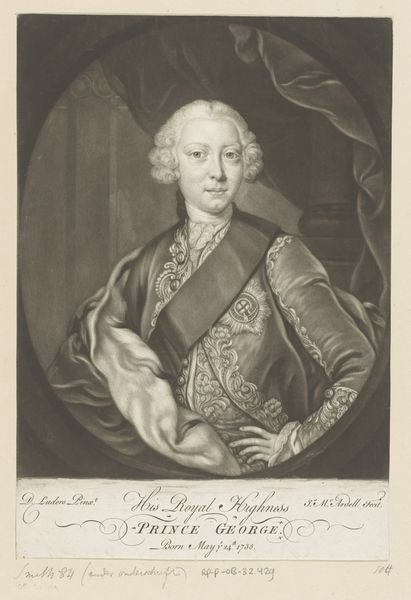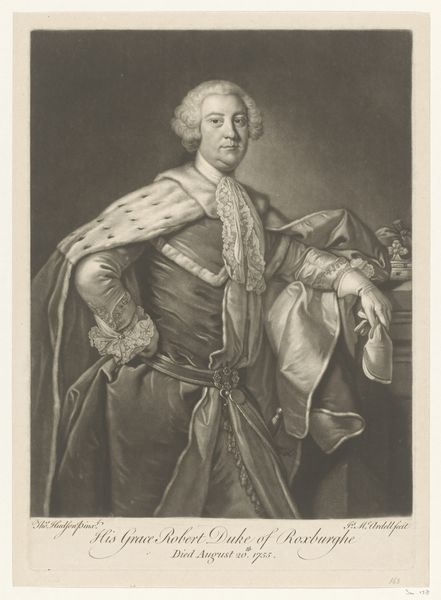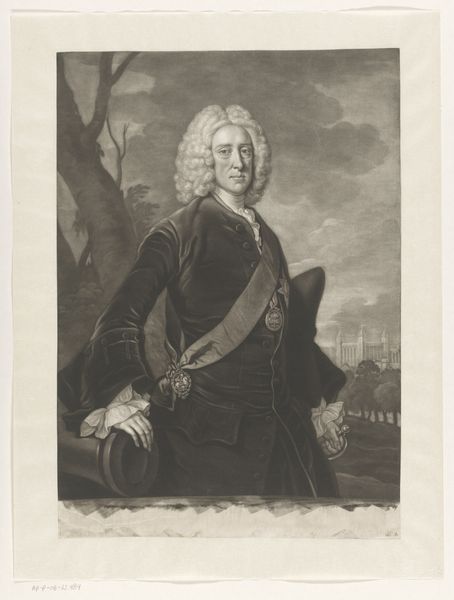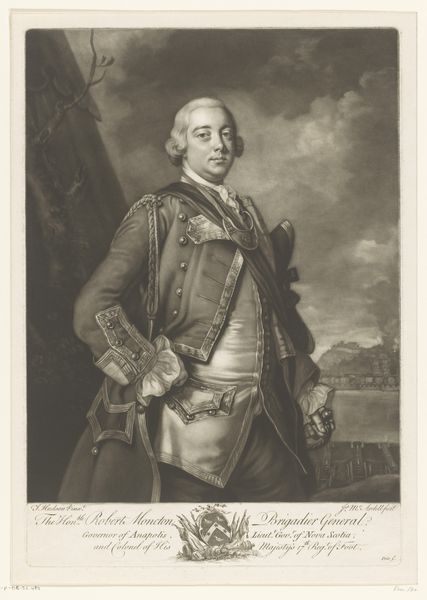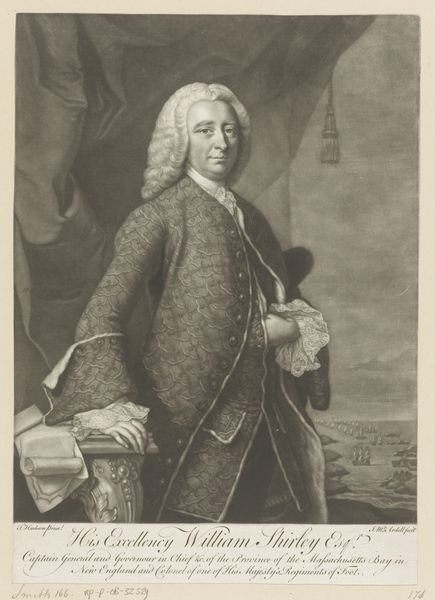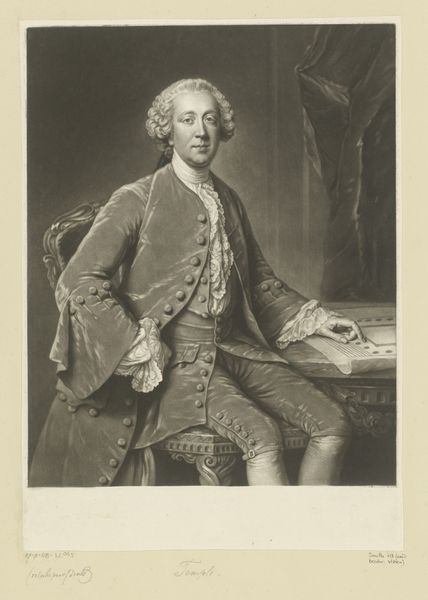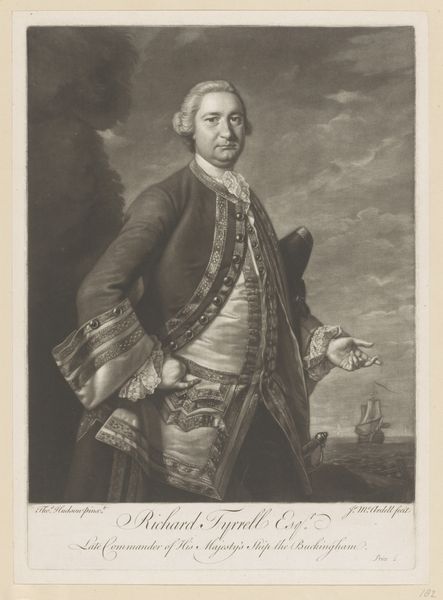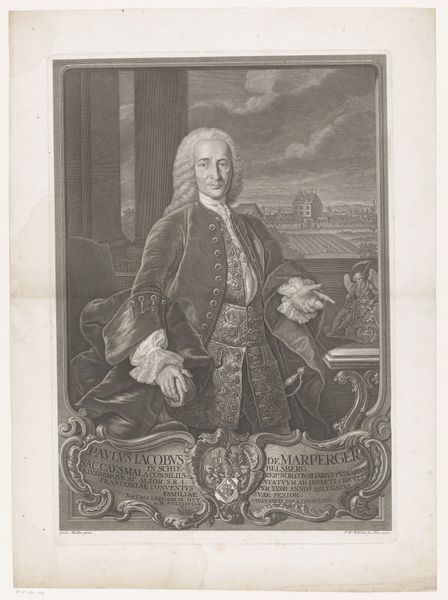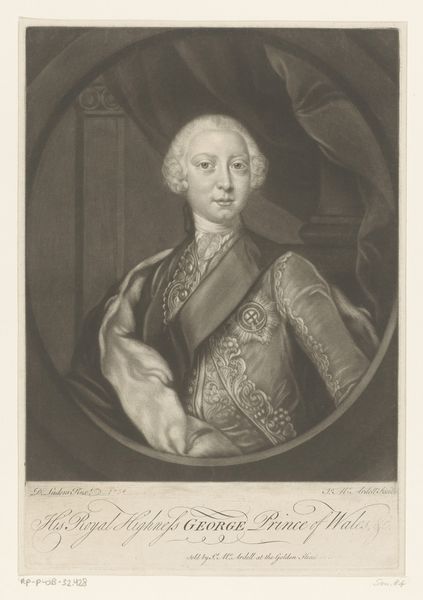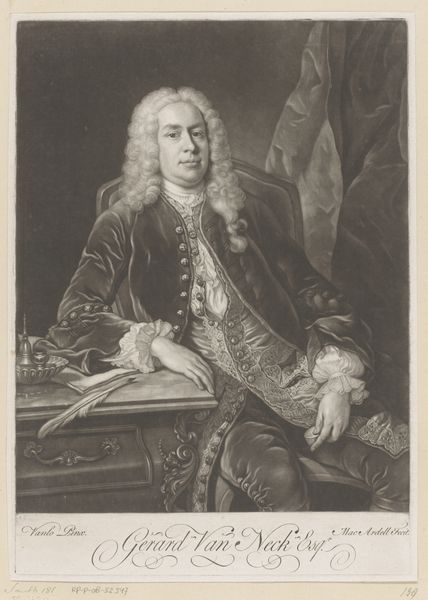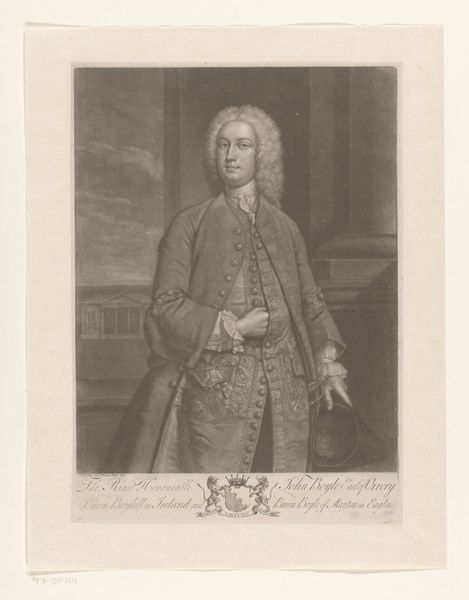
Dimensions: height 354 mm, width 253 mm
Copyright: Rijks Museum: Open Domain
Curator: Here we have "Portret van George Pocock", a print made around 1762 by James McArdell, currently residing at the Rijksmuseum. It presents a striking portrait, wouldn't you agree? Editor: Definitely! There's an almost theatrical quality about it. He's posed so formally, but his expression has this… bemused twinkle? Like he's enjoying a private joke we're not in on. Curator: The subject, Admiral George Pocock, played a significant role in the Royal Navy. Considering the historical context, we must think about the social hierarchy and power structures inherent in representing individuals of his stature. Editor: Oh, absolutely. It’s dripping in power, from that ornate naval uniform to the ship subtly placed in the background, peeking over his shoulder like a tiny toy he commands. I can almost feel the weight of those textiles—linen, silk, thread—on my own body. It’s incredibly textural for a print. Curator: McArdell's choice of the baroque style further reinforces these notions. It signifies a certain opulence and grandeur that were associated with figures of authority in that period. This print invites analysis through the lenses of class, military power, and representation of masculinity. Editor: Masculinity? Absolutely! But not just the "tough admiral" type, there's a softness there, particularly around the mouth. The engraver used these delicate little lines which contrast so nicely with the almost overwhelming amount of pattern. Is this power or vulnerability? I want to reach through time and offer him a cup of tea. Curator: Indeed. Examining this artwork from a post-colonial perspective invites reflection on the global impact of figures like Pocock. His naval achievements were intrinsically tied to Britain's imperial endeavors. Editor: I’d love to see it paired with contemporary works that critique that historical narrative. Imagine a room full of colonial-era portraits juxtaposed with cutting-edge art that challenges the perspectives. It might shift how we engage with both sets of images. Curator: A thought-provoking intersection. It demonstrates how critical dialogues surrounding identity, race, and power are perpetually shaped and reshaped through art. Editor: Looking at him, knowing what we know now about the power and privilege wrapped up in portraits like these, makes you wonder who is really holding the telescope and looking out on history, huh? Curator: Precisely! It encapsulates how deeply art and historical awareness are entwined.
Comments
No comments
Be the first to comment and join the conversation on the ultimate creative platform.
